STING agonist delivery by tumour-penetrating PEG-lipid nanodiscs primes robust anticancer immunity
- PMID: 35606429
- PMCID: PMC9156412
- DOI: 10.1038/s41563-022-01251-z
STING agonist delivery by tumour-penetrating PEG-lipid nanodiscs primes robust anticancer immunity
Abstract
Activation of the innate immune STimulator of INterferon Genes (STING) pathway potentiates antitumour immunity, but systemic delivery of STING agonists to tumours is challenging. We conjugated STING-activating cyclic dinucleotides (CDNs) to PEGylated lipids (CDN-PEG-lipids; PEG, polyethylene glycol) via a cleavable linker and incorporated them into lipid nanodiscs (LNDs), which are discoid nanoparticles formed by self-assembly. Compared to state-of-the-art liposomes, intravenously administered LNDs carrying CDN-PEG-lipid (LND-CDNs) exhibited more efficient penetration of tumours, exposing the majority of tumour cells to STING agonist. A single dose of LND-CDNs induced rejection of established tumours, coincident with immune memory against tumour rechallenge. Although CDNs were not directly tumoricidal, LND-CDN uptake by cancer cells correlated with robust T-cell activation by promoting CDN and tumour antigen co-localization in dendritic cells. LNDs thus appear promising as a vehicle for robust delivery of compounds throughout solid tumours, which can be exploited for enhanced immunotherapy.
© 2022. The Author(s).
Conflict of interest statement
D.J.I., E.L.D. and M.O. are inventors on a patent related to the LND-CDN technology. The remaining authors declare no competing interests.
Figures
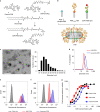

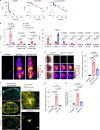
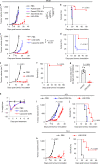

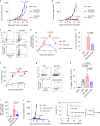
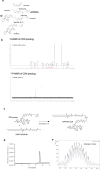








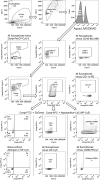
Comment in
-
Lipid nanodiscs give cancer a STING.Nat Mater. 2022 Jun;21(6):616-617. doi: 10.1038/s41563-022-01270-w. Nat Mater. 2022. PMID: 35606430 No abstract available.
Similar articles
-
Endosomolytic polymersomes increase the activity of cyclic dinucleotide STING agonists to enhance cancer immunotherapy.Nat Nanotechnol. 2019 Mar;14(3):269-278. doi: 10.1038/s41565-018-0342-5. Epub 2019 Jan 21. Nat Nanotechnol. 2019. PMID: 30664751 Free PMC article.
-
Conjugated STING agonists.Mol Ther Nucleic Acids. 2025 Mar 31;36(2):102530. doi: 10.1016/j.omtn.2025.102530. eCollection 2025 Jun 10. Mol Ther Nucleic Acids. 2025. PMID: 40291379 Free PMC article. Review.
-
Discovery of novel Thieno[2,3-d]imidazole derivatives as agonists of human STING for antitumor immunotherapy using systemic administration.Eur J Med Chem. 2022 Aug 5;238:114482. doi: 10.1016/j.ejmech.2022.114482. Epub 2022 May 30. Eur J Med Chem. 2022. PMID: 35671593
-
Systemic nano-delivery of low-dose STING agonist targeted to CD103+ dendritic cells for cancer immunotherapy.J Control Release. 2022 May;345:721-733. doi: 10.1016/j.jconrel.2022.03.054. Epub 2022 Apr 1. J Control Release. 2022. PMID: 35378213
-
STING-Activating Small Molecular Therapeutics for Cancer Immunotherapy.Chembiochem. 2024 Oct 1;25(19):e202400255. doi: 10.1002/cbic.202400255. Epub 2024 Sep 3. Chembiochem. 2024. PMID: 38980259 Review.
Cited by
-
Local delivery of cell surface-targeted immunocytokines programs systemic anti-tumor immunity.bioRxiv [Preprint]. 2024 Jan 3:2024.01.03.573641. doi: 10.1101/2024.01.03.573641. bioRxiv. 2024. Update in: Nat Immunol. 2024 Oct;25(10):1820-1829. doi: 10.1038/s41590-024-01925-7. PMID: 38260254 Free PMC article. Updated. Preprint.
-
Updates in combined approaches of radiotherapy and immune checkpoint inhibitors for the treatment of breast cancer.Front Oncol. 2022 Oct 26;12:1022542. doi: 10.3389/fonc.2022.1022542. eCollection 2022. Front Oncol. 2022. PMID: 36387071 Free PMC article. Review.
-
Overcoming pancreatic cancer immune resistance by codelivery of CCR2 antagonist using a STING-activating gemcitabine-based nanocarrier.Mater Today (Kidlington). 2023 Jan-Feb;62:33-50. doi: 10.1016/j.mattod.2022.11.008. Epub 2022 Dec 8. Mater Today (Kidlington). 2023. PMID: 38239407 Free PMC article.
-
Lipid-based nanoparticles as drug delivery systems for cancer immunotherapy.MedComm (2020). 2023 Aug 7;4(4):e339. doi: 10.1002/mco2.339. eCollection 2023 Aug. MedComm (2020). 2023. PMID: 37560754 Free PMC article. Review.
-
A landscape of recent advances in lipid nanoparticles and their translational potential for the treatment of solid tumors.Bioeng Transl Med. 2023 Nov 9;9(2):e10601. doi: 10.1002/btm2.10601. eCollection 2024 Mar. Bioeng Transl Med. 2023. PMID: 38435821 Free PMC article. Review.
References
Publication types
MeSH terms
Substances
Grants and funding
LinkOut - more resources
Full Text Sources
Medical
Research Materials

